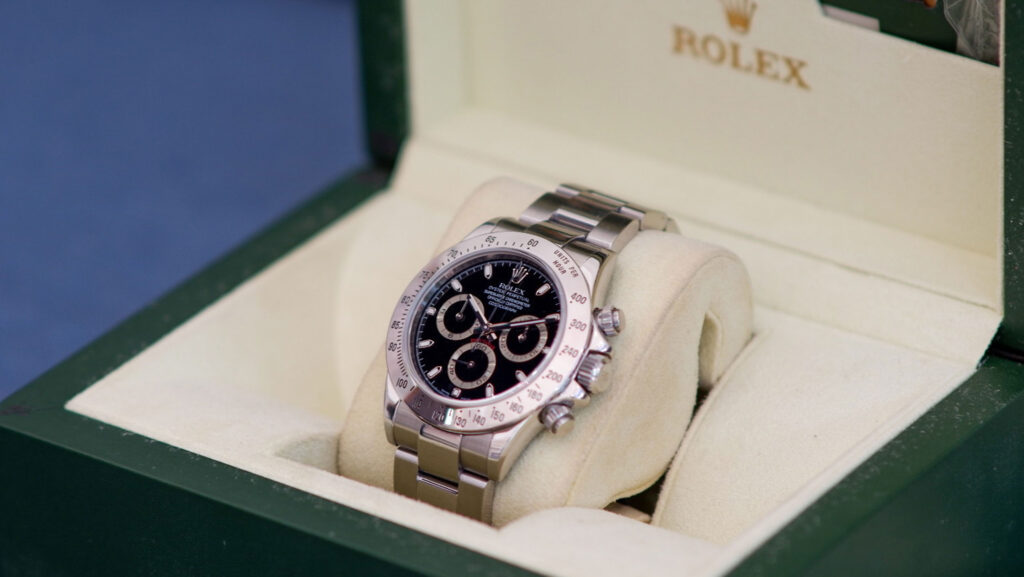Starting in the mid 80’s up until the early 90’s, the TAG-Heuer Formula 1 sports watch was the epitome of conyo cool. Preppy high school and college kids sported these bright-colored Swiss-made watches with their chinos, Ralph Lauren POLO shirts, braided belts and Cole-Haan loafers or Sperry boat shoes.
Where did it all begin?
TAG-Heuer’s Formula 1 designer Eddy Burgener, in an interview with Hodinkee dated March 2025, says that the Formula 1 was built to compete against Japanese quartz brands like Casio, which were building cheap, yet highly accurate diving and sports watches. This era would later be known as the quartz crisis, when the old-guard Swiss-makers were losing ground to a flurry of inexpensive yet equally accurate and stylish alternatives from Japan.
Before its acquisition by Techniques D’avant Garde or TAG in 1985, Edward Heuer’s watch company namesake had produced time keeping equipment for the Scuderiq Ferrari Team. TAG-Heuer then debuted its new line of colorful F1 watches while celebrating its new partnership with the Woking-based McLaren F1 Team during the1986 Formula 1 season.

TAG-Heuer enjoyed a particularly special relationship with Brazilian Racing Legend Ayrton Senna da Silva who famously sported their watches away from the track as well. One of Senna’s most iconic photographs wearing a TAG Heuer watch was at the penultimate race of 1991, the Japanese Grand Prix in Suzuka where the Brazilian clinched his third World Driver’s Championship while wearing a TAG Heuer Formula 1 Chronograph.
The McLaren partnership was very succesful, lasting 30 years, from 1985 to 2015. This partnership yielded an impressive eight world driver’s championships from Champions such as Alain Prost, Ayrton Senna, Mika Hakkinen and its most recent, Lewis Hamilton. The partnership also yielded five Manufacturer’s Titles for TAG McLaren.
The watch itself featured some technical innovations back in 1985: TAG Heuer wanted to design an affordable sports watch with a quartz movement. A colorful synthetic case was to be utilized but needed to be pressure rated for 200-meters of depth. Such technology maybe commonplace today, but was unheard of in horology in the 80’s! The synthetic case and bezel were fundamental to give the watches color and a distinct feel. The uni-directional synthetic bezel also required TAG Heuer to develop a synthetic spring, as a metal spring would have accelerated the wear on the synthetic parts.



In 2016, TAG Heuer entered into a new partnership with Red Bull Racing, a year after it parted with McLaren. That partnership today has yielded four world driver’s championships with Max Verstappen and two manufacturer’s championships for Red Bull Racing.
In 2025, the Swiss Luxury juggernaut LVMH entered into a ten year partnership with Formula One. TAG Heuer became the series’ official time-keeper as well as continuing to be Red Bull Racing’s sponsor and partner.
In-line with Tag-Heuer’s renewed partnership with the pinnacle of motorsport, the Swiss-based luxury watchmaker has re-issued the Formula 1 line of watches.
So what’s new with the 2025 edition??
Firstly new watch is a slightly larger 38mm versus the original’s 35mm. Purists may be disappointed, but most pundits feel the slightly larger 38mm case suits today’s zeitgeist of watch aficionados and enthusiasts. Other changes are an applied luminous hour markers, crisper hands, and a sleeker, more angular interpretation of the old case-shape, with its “hooded” lug protuberances originally designed to reinforce the plastic casing around the strap attachment.


A nod toward eco credentials comes in the form of bioplastic—a castor-based polyamide which the brand has named TH-Polylight—an on-trend substitute for the “Arnite” thermoplastic of old. As before, though, this is molded over a steel inner core, making for a watch that’s rather more robust than most plastic-cased equivalents.

The most important technical update to the new Formula 1 lineup is the new Solargraph movement. Co-developed with La Joux-Perret, the Solargraph TH50-00 caliber is specced higher than its competitors with a continuous running time of 10 months with no light exposure. Two minutes of direct sunlight exposure can power the watch for an entire day and the battery is good for 15 years.
A total of nine variants will be made available: three in sandblasted stainless steel with green, black, or blue polymer bezels and six full-color limited-editions to become available at upcoming Grand Prix races, with cases and bezels in contrasting tones, including yellow/black, red/black, and green/red, all with matching rubber straps. It’s going to be hard to pick the one you want!

Aside from the regular F1 line-up, TAG Heuer also released two special model Monaco chronographs (the fully ceramic cased split-second chronograph and the titanium cased Monaco Stopwatch) and the Red Bull Racing collab watches. Max Verstappen was seen prominently wearing the split second chronograph when he won the Japanese Grand Prix earlier this year.
Motorsports and watches just got a whole lot more playful and exciting!



